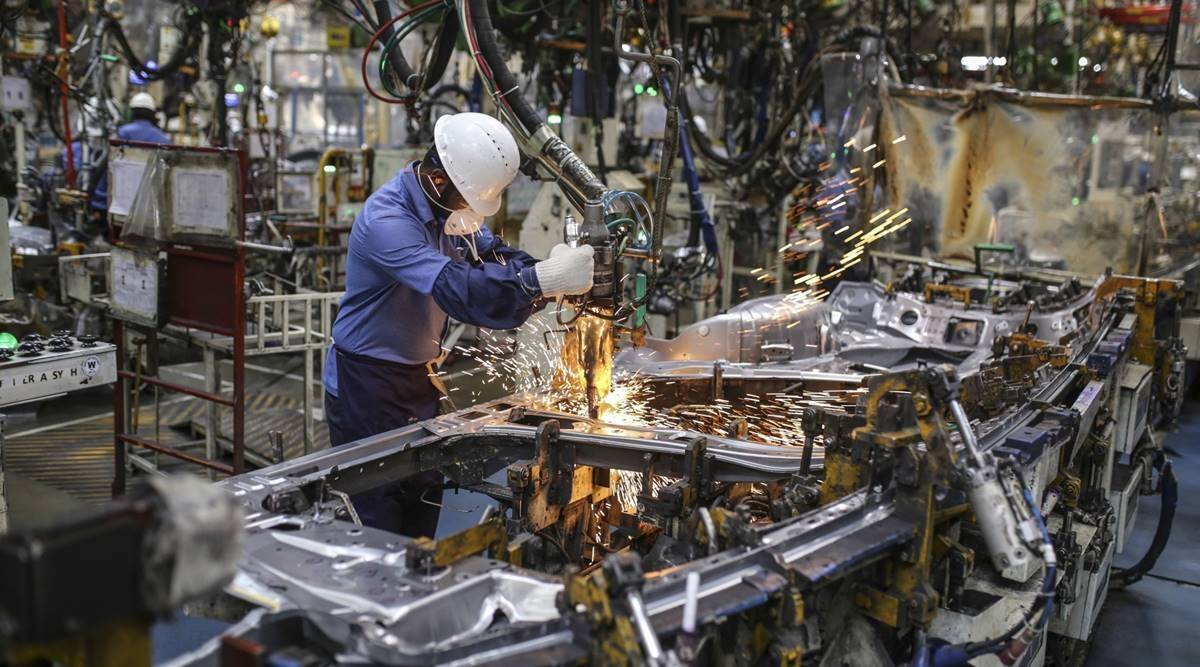India–US Trade Tensions Rise Over Steel and Auto Tariffs NMDC Limited reports a 38% drop in Q4 FY24 consolidated net profit RINL to Raise $23 Million Through Land Sales Amid Crisis

India's industrial output as measured by the Index of Industrial Production (IIP) recorded a growth of 3.8% in December 2023, which is lower than 5.1% in the year-ago period, the Ministry of Statistics & Programme Implementation (MoSPI) said on Monday (February 12).
"India's Index of Industrial Production grows by 3.8% in December 2023," an official statement said.
The data released by the National Statistical Office (NSO) showed that the manufacturing sector’s output grew 3.9% in December 2023, up from 3.6% in the year-ago month.
In December last year, mining production rose by 5.1% and power output increased by 1.2%.
IIP grew 6.1% during the April-December 2023 period compared to a 5.5% expansion in the year-ago period.
What does this indicate about the state of industrial activity?
The assessment of India's industrial status involves a comprehensive examination of various economic indicators. The GDP growth rate, particularly the contribution from the industrial sector, serves as a critical metric. Any decline may indicate challenges impeding industrial development. Similarly, evaluating employment rates generated by the industrial sector provides insights into its ability to create jobs, a pivotal aspect of sustainable growth. Additionally, a global competitiveness analysis can shed light on areas where improvement is necessary for Indian industries to thrive on the international stage.
Infrastructure and technological factors play a crucial role in shaping the industrial landscape. The adoption of modern technologies within industries reflects their efficiency and global competitiveness. Simultaneously, the state of infrastructure, encompassing transportation, energy, and communication, directly influences growth. A focus on advancing technology and bolstering infrastructure is vital for sustained industrial development.
The regulatory environment significantly impacts the ease of doing business. Cumbersome bureaucratic processes may discourage investment and hinder growth. Therefore, assessing and streamlining regulatory procedures is essential for fostering a conducive environment for industrial activities. Moreover, the government's policies and initiatives supporting industrial development require scrutiny to identify gaps and areas for improvement.
To propel improvements in India's industrial status, a multifaceted approach is recommended. Firstly, encouraging investments in research and development (R&D) fosters innovation and technological advancements. Infrastructure development, including enhanced connectivity and logistical support, is pivotal for overall industrial growth. Streamlining regulatory processes to improve the ease of doing business is imperative, promoting a more investor-friendly climate.
Investing in education and skill development programmes ensures a workforce equipped with the necessary skills to meet the evolving needs of industries. Encouraging industries to adopt environmentally sustainable practices is crucial for long-term viability and aligning with global environmental goals. International collaboration, involving partnerships for knowledge exchange, technology transfer, and market access, can also contribute significantly to India's industrial development.
Furthermore, recognising the role of small and medium enterprises (SMEs) is essential, and targeted support for their growth can drive industrial expansion and create employment opportunities. Collaboration between government, industry stakeholders, and academia is paramount to developing and implementing effective strategies that address the specific challenges and opportunities within the Indian industrial sector.
Also Read : Economic Caution: India’s Factory Activity Growth Weakens EU prepares 25% counter-tariffs on US goods in response to trade tensions